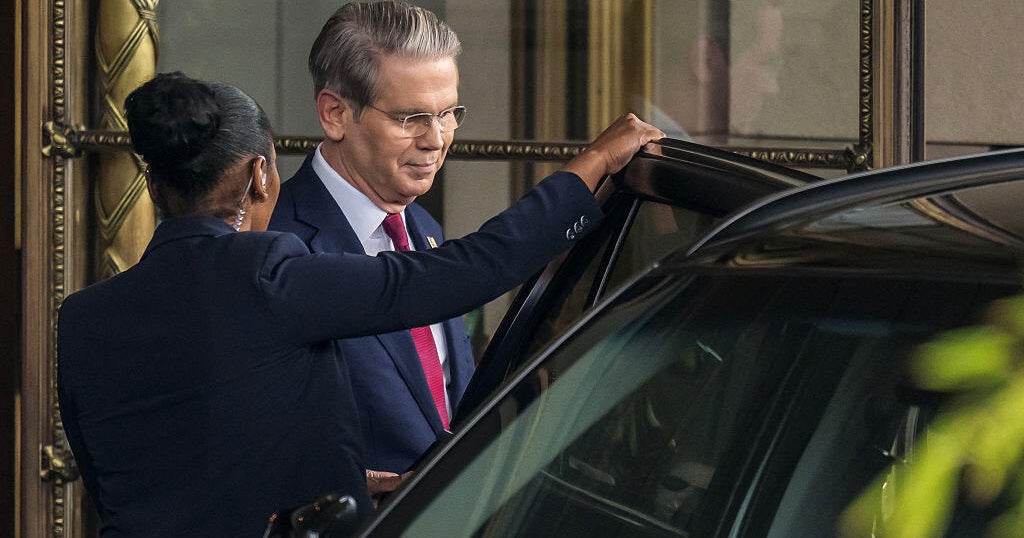Intense negotiations between U.S. and Chinese delegations over escalating tariffs concluded after a lengthy meeting in Switzerland, which lasted over ten hours. The discussions, aimed at addressing trade tensions that threaten the global economy, have been marked by secrecy, with no immediate indication of progress. Both countries are under pressure to resolve these issues, with tariffs reaching historically high levels that have strained international markets.
| Article Subheadings |
|---|
| 1) Overview of the Negotiation Context |
| 2) Details of the Meeting |
| 3) Tariff Impacts on Trade |
| 4) Reactions from Key Stakeholders |
| 5) Future Prospects for Trade Relations |
Overview of the Negotiation Context
The recent talks between American and Chinese officials come in a climate of escalating economic tension that has affected global markets. U.S. Treasury Secretary Scott Bessent and Chinese Vice Premier He Lifeng met in a luxurious venue in Switzerland seeking to navigate the complexities of trade relationships. Issues surrounding tariffs have proliferated, with each nation imposing significant levies on the other, resulting in strained economic conditions. Given the significance of these two economies, the outcomes of discussions are vital not just for the nations involved, but for the world.
Details of the Meeting
The meeting on Saturday lasted more than ten hours and was characterized by a lack of outward communication from attendees afterward. Both Bessent and Lifeng did not provide insights during their departures from the Swiss ambassador’s residence. Sources familiar with the discussions suggest that initial dialogues focused on the need for de-escalation rather than an extensive new trade deal. There are hopes for substantive measures that could bring about stable relations, which have been undermined by the U.S.-China standoff.
Tariff Impacts on Trade
The trade war has led to tariffs imposed by the U.S. totaling 145% on Chinese goods, while China has retaliated with a 125% levy on American imports. Such increased taxation on both sides has effectively resulted in a boycott of each nation’s goods, disrupting a trade relationship that was valued at over $660 billion. Importantly, experts believe that alleviating these tariff burdens could expedite economic recovery for both countries and stabilize global markets devastated by the ongoing tensions.
Reactions from Key Stakeholders
U.S. President Donald Trump has expressed belief that negotiations with China are essential and has maintained that a favorable deal should be concluded soon. However, Chinese representatives have urged the Trump administration to abandon its unilateral tariffs as a prerequisite for any meaningful negotiations. Economists emphasize that lower tariffs would signal goodwill between these economic giants and improve conditions for businesses reliant on stable trade.
Future Prospects for Trade Relations
Looking ahead, both sides remain cautious. Analysts are hopeful that the current discussions will lead to a reduction in the soaring tariffs, which are unsustainable in the long run. Sun Yun, a director at the Stimson Center, expressed skepticism about achieving tangible results in this meeting. Still, she acknowledged that even minor concessions could foster goodwill and improve bilateral relations moving forward. With pressures mounting, the outcome of these discussions will have significant implications for future trade policies.
| No. | Key Points |
|---|---|
| 1 | U.S. and Chinese delegations held extensive talks aimed at resolving trade tensions. |
| 2 | Tariffs imposed by both nations have reached historic highs, profoundly affecting global trade. |
| 3 | No immediate progress was reported following the meeting, which lasted over ten hours. |
| 4 | Future negotiations may hinge on the reduction of existing tariffs to promote economic stability. |
| 5 | Stakeholders remain hopeful yet wary about the potential outcomes of the ongoing discussions. |
Summary
As U.S. and Chinese officials resume discussions over tariffs that have disrupted their trade relationship, the stakes have never been higher. The outcomes of these negotiations could not only redefine trade policies between the two largest economies but also stabilize the global market landscape significantly. The resolve of both parties to de-escalate tensions may yield beneficial results, although skepticism remains as to whether meaningful progress can be achieved. The evolving situation demands close monitoring, as any substantive shifts in policy could resonate for years to come.
Frequently Asked Questions
Question: What are the current tariff levels between the U.S. and China?
The current tariffs include U.S. levies on Chinese goods totaling 145%, while China has imposed retaliatory tariffs of 125% on American imports.
Question: Why are the talks between the U.S. and China significant?
These talks are crucial for resolving trade tensions that disrupt not only U.S.-China relations but also impact global economic stability and market performance.
Question: What do officials hope to achieve through these negotiations?
Officials are aiming to agree on a de-escalation of tariffs to foster better trade relations and alleviate pressures on businesses affected by the ongoing trade war.
